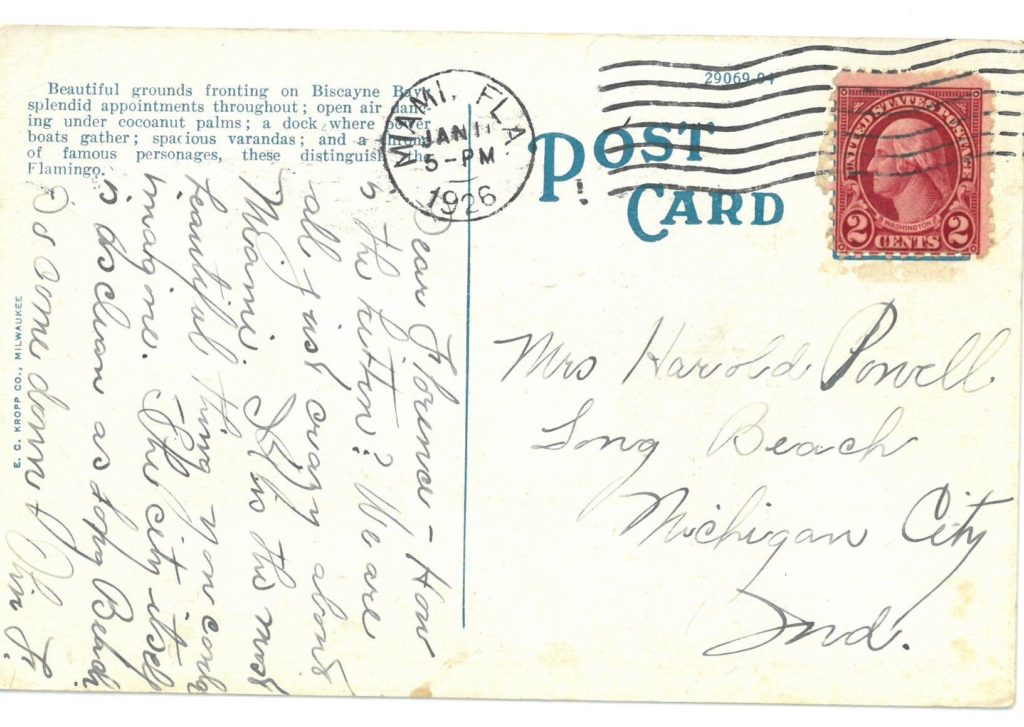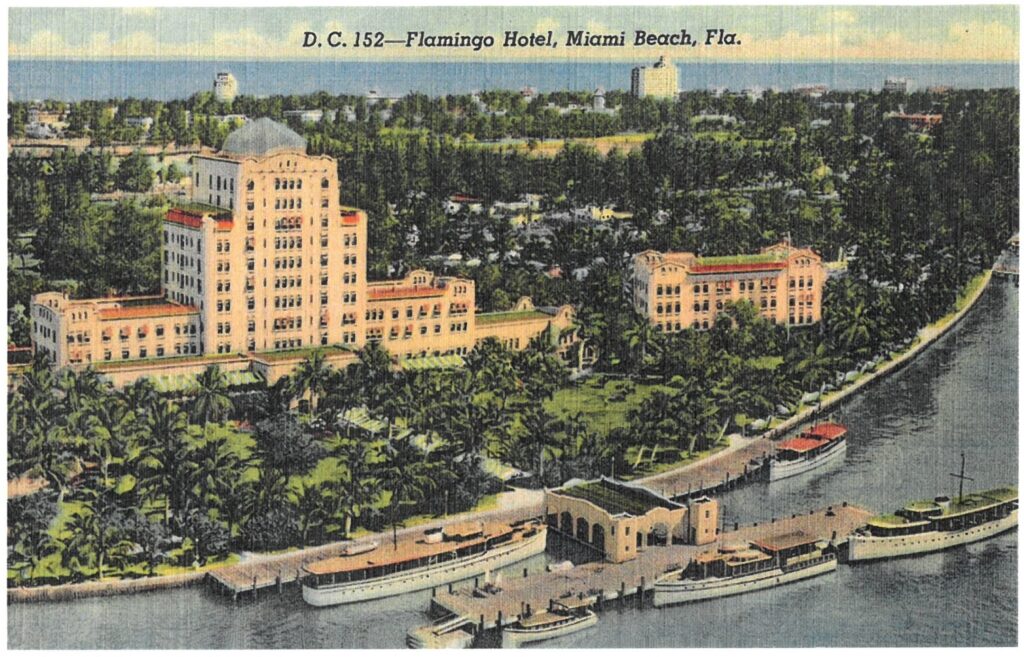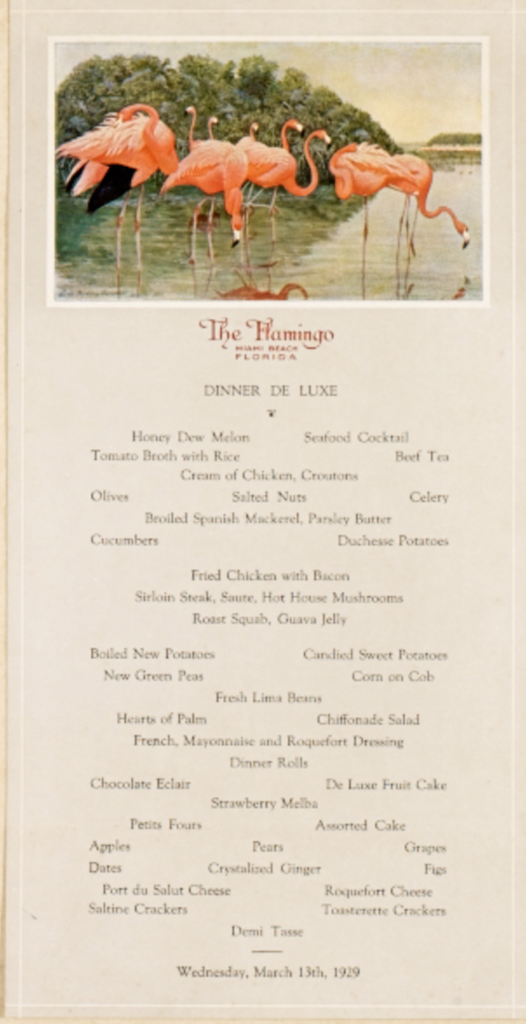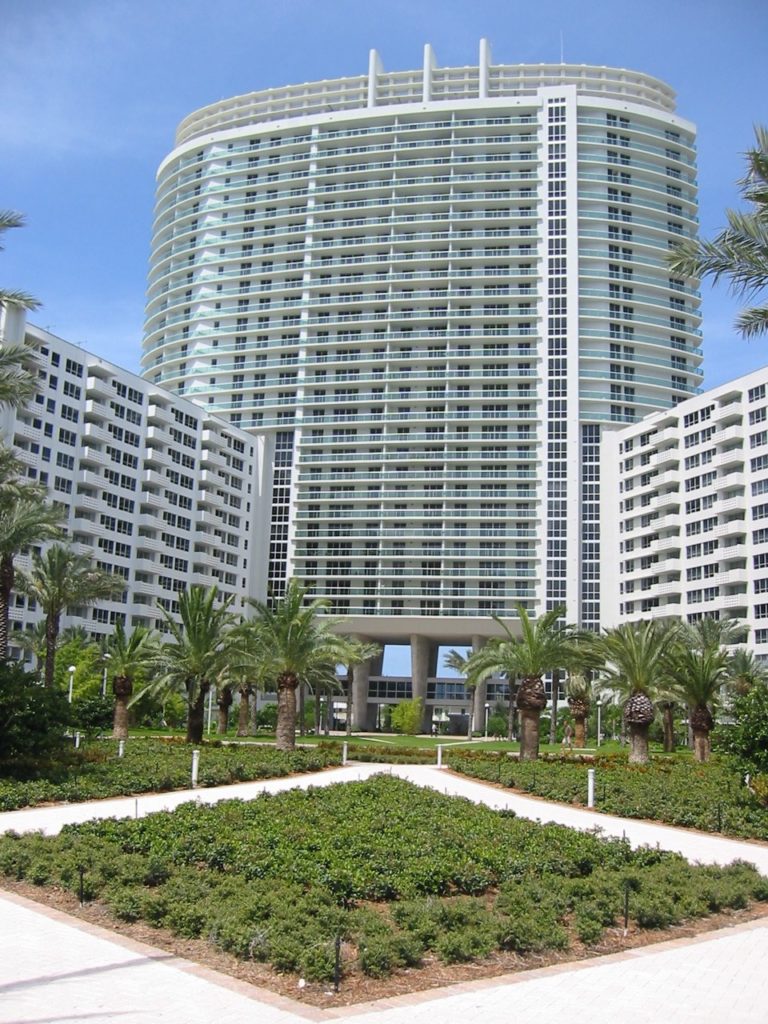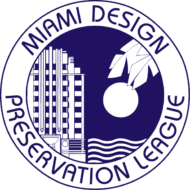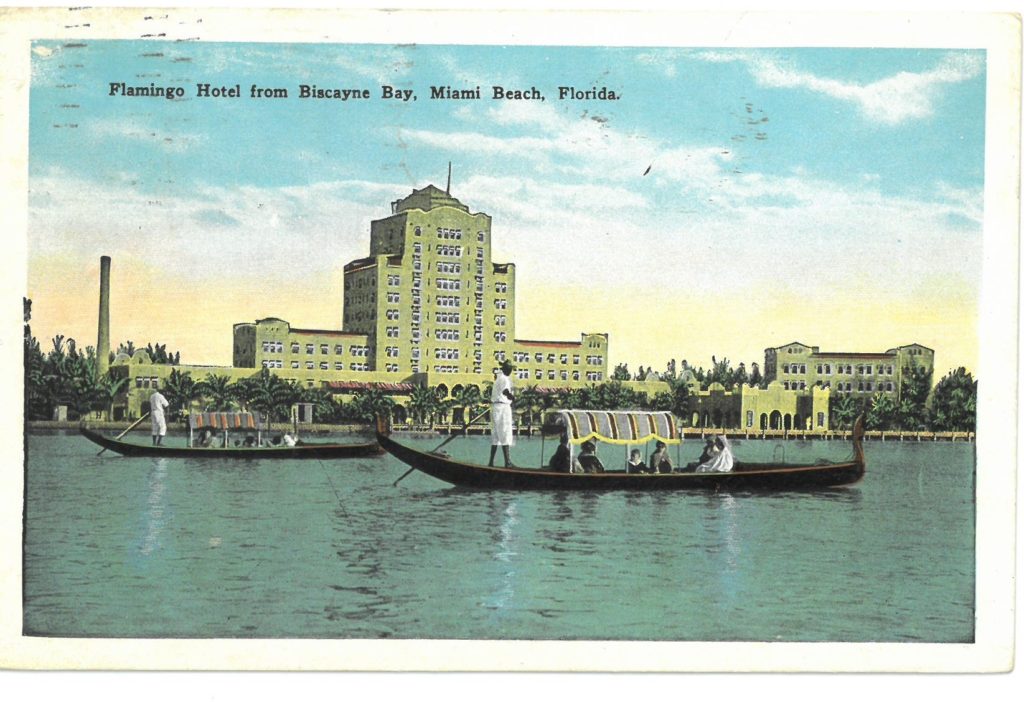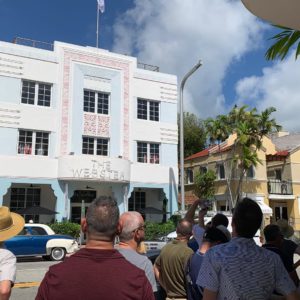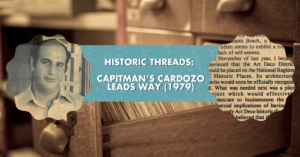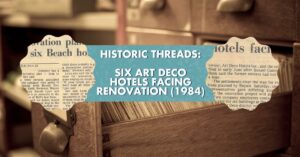The Flamingo Hotel was built by pioneering Miami Beach developer Carl G. Fisher on 15th Street & Bay Road. It was designed by Rubush & Hunter and officially opened at a New Year’s Eve celebration on December 31st, 1920. From a Miami Herald article dated January 1, 1921, it was written “A large and fashionable gathering danced in the open air to delightful music and enjoyed delicious refreshments served by attractive girls garbed in typical Oriental costumes. The tea garden is situated on the west side of the hotel and commands an extensive view of Biscayne Bay, and has a charming Japanese tea house and a pretty terrazzo dance floor in lovely tropical surroundings.”

At the time it was Fisher’s intention to rival the Breakers Hotel in Palm Beach. He succeeded by building the second tallest hotel in Florida at 154 feet. The structure stood out because of its Flamingo Pink color and because the center tower rose to eleven stories. It was topped by a glass dome that added another thirty feet and at night lit up with changing colors. An adjoining golf course was designed by Captain H.C. Tippet. The total cost of building and furnishing the hotel was estimated at $1.25 million. Room rates on the American Plan, which included food, were at $15 to $20 a day.
Fisher was determined to avoid the ocean-side beaches where his development partner John S. Collins had established the popular Roman Pools Bathing Casino. This location was an ideal spot for speedboat racing, gondola rides and polo matches. The polo field was located in the current day Flamingo park and predated the hotel opening in 1919. After the polo games, tea dances at the hotel were always part of the social life.
The Flamingo site overlooked the majestic Flagler Monument Island in Biscayne Bay. Carl Fisher saw boat racing spectacles on the smooth waters of Biscayne Bay as the perfect place to attract wealthy and refined tourists. Examples of some of the wealthiest that vacationed there were “The King of Tires” Harvey Firestone, and “The King of Candy”, William F. Schrafft. Fisher, then known as the pioneer automobile racing promoter, also established the famous Biscayne Bay Speed Boat Regattas near Belle Isle, as a publicity draw for his giant new hotel.
In December 1924, Fisher announced he would be building a private acquarium at the Flamingo that would be stocked by the prior supervisor of the Miami Beach Acquarium, Captain Thompson. Fisher would also import six prized flamingos from Africa from the same source that supplied animals to P.T. Barnum.

Unfortunately, in the 1950’s the historic hotel was torn down to make room for the Morton Towers apartment development. Since then the property was expanded to include a center tower and the name was changed to The Flamingo Apartments. Currently, further updates and renovations are in place and the property is now called the Flamingo Point South Apartments.
Shown are the front and back of a vintage 1926 postcard of the Flamingo with other 1920’s postcards including one showing guests dancing in the tea garden as well as a magazine advertisement from 1921 and dinner menu of 1929.
